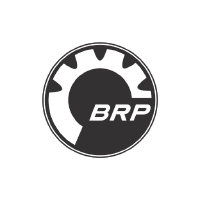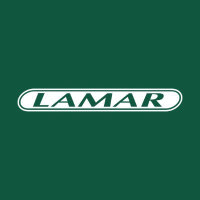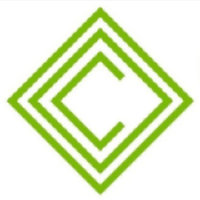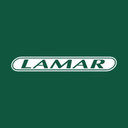
BRP Inc
TSX:DOO


| US |

|
Johnson & Johnson
NYSE:JNJ
|
Pharmaceuticals
|
| US |

|
Berkshire Hathaway Inc
NYSE:BRK.A
|
Financial Services
|
| US |

|
Bank of America Corp
NYSE:BAC
|
Banking
|
| US |

|
Mastercard Inc
NYSE:MA
|
Technology
|
| US |

|
UnitedHealth Group Inc
NYSE:UNH
|
Health Care
|
| US |

|
Exxon Mobil Corp
NYSE:XOM
|
Energy
|
| US |

|
Pfizer Inc
NYSE:PFE
|
Pharmaceuticals
|
| US |

|
Palantir Technologies Inc
NYSE:PLTR
|
Technology
|
| US |

|
Nike Inc
NYSE:NKE
|
Textiles, Apparel & Luxury Goods
|
| US |

|
Visa Inc
NYSE:V
|
Technology
|
| CN |

|
Alibaba Group Holding Ltd
NYSE:BABA
|
Retail
|
| US |

|
JPMorgan Chase & Co
NYSE:JPM
|
Banking
|
| US |

|
Coca-Cola Co
NYSE:KO
|
Beverages
|
| US |

|
Walmart Inc
NYSE:WMT
|
Retail
|
| US |

|
Verizon Communications Inc
NYSE:VZ
|
Telecommunication
|
| US |

|
Chevron Corp
NYSE:CVX
|
Energy
|
Utilize notes to systematically review your investment decisions. By reflecting on past outcomes, you can discern effective strategies and identify those that underperformed. This continuous feedback loop enables you to adapt and refine your approach, optimizing for future success.
Each note serves as a learning point, offering insights into your decision-making processes. Over time, you'll accumulate a personalized database of knowledge, enhancing your ability to make informed decisions quickly and effectively.
With a comprehensive record of your investment history at your fingertips, you can compare current opportunities against past experiences. This not only bolsters your confidence but also ensures that each decision is grounded in a well-documented rationale.
Do you really want to delete this note?
This action cannot be undone.

| 52 Week Range |
44.87
106.81
|
| Price Target |
|
We'll email you a reminder when the closing price reaches CAD.
Choose the stock you wish to monitor with a price alert.

|
Johnson & Johnson
NYSE:JNJ
|
US |

|
Berkshire Hathaway Inc
NYSE:BRK.A
|
US |

|
Bank of America Corp
NYSE:BAC
|
US |

|
Mastercard Inc
NYSE:MA
|
US |

|
UnitedHealth Group Inc
NYSE:UNH
|
US |

|
Exxon Mobil Corp
NYSE:XOM
|
US |

|
Pfizer Inc
NYSE:PFE
|
US |

|
Palantir Technologies Inc
NYSE:PLTR
|
US |

|
Nike Inc
NYSE:NKE
|
US |

|
Visa Inc
NYSE:V
|
US |

|
Alibaba Group Holding Ltd
NYSE:BABA
|
CN |

|
JPMorgan Chase & Co
NYSE:JPM
|
US |

|
Coca-Cola Co
NYSE:KO
|
US |

|
Walmart Inc
NYSE:WMT
|
US |

|
Verizon Communications Inc
NYSE:VZ
|
US |

|
Chevron Corp
NYSE:CVX
|
US |
This alert will be permanently deleted.
BRP Inc
BRP Inc., born out of the snowy landscapes of Quebec, has carved its niche in the exhilarating world of power sports and recreational vehicles. With roots tracing back to the iconic snowmobile pioneering Bombardier family, the company stands today as a force of innovation and engineering prowess. BRP’s product lineup is a tribute to adventure enthusiasts, offering a suite of vehicles that rev up the heartbeats of thrill-seekers. From Sea-Doo watercraft zipping over azure oceans to Can-Am off-road ATVs conquering rugged terrains, the company’s offerings are synonymous with freedom and adrenaline. In addition to recreational vehicles, BRP produces Rotax engines, known for their reliability and performance, which power not just its own creations, but also a variety of applications globally.
The company's financial engine purrs thanks to its strategic prowess in capturing the hearts and wallets of adventure lovers across a mix of recreational areas. BRP deftly combines cutting-edge design and robust performance, creating products that command loyalty and repeat business—a key to its thriving business model. The marketplace for BRP extends across continents, with an astute retail presence and a comprehensive dealer network ensuring that its high-octane machines reach enthusiasts worldwide. Moreover, BRP’s aftermarket products and accessories continue to bolster its revenue, offering consumers parts and gear to enhance or maintain their equipment. Through this blend of innovation, quality, and strategic reach, BRP has cemented its stature as a leader in powersports, with a business model that thrives on delivering intense experiences and robust performance to its ardent customers.

BRP Inc., born out of the snowy landscapes of Quebec, has carved its niche in the exhilarating world of power sports and recreational vehicles. With roots tracing back to the iconic snowmobile pioneering Bombardier family, the company stands today as a force of innovation and engineering prowess. BRP’s product lineup is a tribute to adventure enthusiasts, offering a suite of vehicles that rev up the heartbeats of thrill-seekers. From Sea-Doo watercraft zipping over azure oceans to Can-Am off-road ATVs conquering rugged terrains, the company’s offerings are synonymous with freedom and adrenaline. In addition to recreational vehicles, BRP produces Rotax engines, known for their reliability and performance, which power not just its own creations, but also a variety of applications globally.
The company's financial engine purrs thanks to its strategic prowess in capturing the hearts and wallets of adventure lovers across a mix of recreational areas. BRP deftly combines cutting-edge design and robust performance, creating products that command loyalty and repeat business—a key to its thriving business model. The marketplace for BRP extends across continents, with an astute retail presence and a comprehensive dealer network ensuring that its high-octane machines reach enthusiasts worldwide. Moreover, BRP’s aftermarket products and accessories continue to bolster its revenue, offering consumers parts and gear to enhance or maintain their equipment. Through this blend of innovation, quality, and strategic reach, BRP has cemented its stature as a leader in powersports, with a business model that thrives on delivering intense experiences and robust performance to its ardent customers.
Q3 Beat: BRP delivered third quarter results ahead of expectations, with strong revenue, EBITDA, and EPS growth.
Raised Guidance: Management increased full-year guidance, now expecting about $8.3 billion in revenue, $1.1 billion normalized EBITDA, and $5 normalized EPS for fiscal '26.
ORV Momentum: Significant market share gains in off-road vehicles (ORV), driven by successful new product launches like the Can-Am Defender HD11.
Inventory Discipline: Dealer and network inventories are down double digits year-over-year, positioning BRP well to meet future demand.
Share Buyback: The company renewed its share repurchase program and plans to be active in the coming weeks after strengthening its balance sheet.
Macro & Industry: The market remains promotional and competitive, especially for entry-level products, but BRP's high-end offerings are outperforming.
Leadership Transition: CEO Jose Boisjoli will step down after this quarter, with a new CEO expected by the end of January.







































